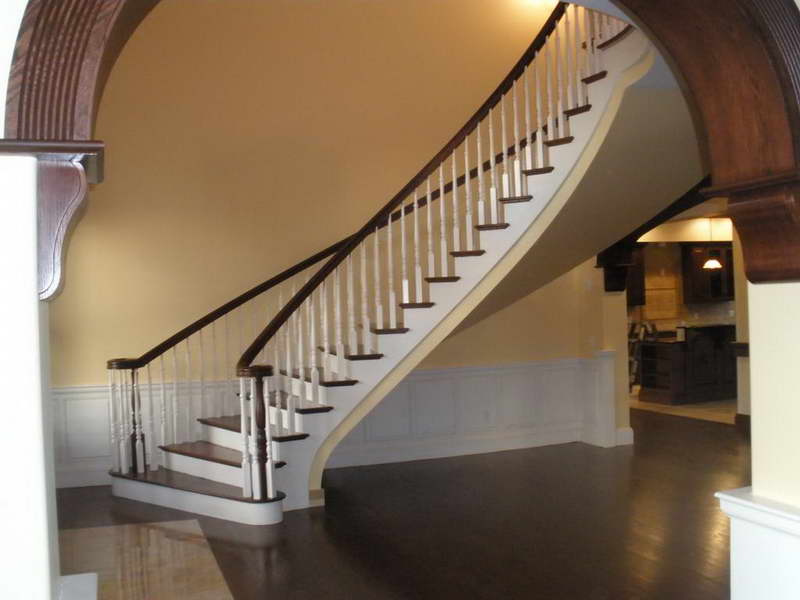ARCHED STAIRCASE | An Architect Explains

Using different materials, you can create different types of arched stairs which create different impressions. Arched stairs have advantages and disadvantages. To help you decide the arched staircase that best suits your requirement, as an Architect I have described different types of Arched staircases here:
What are the types of two-stringer arched staircases?
What are the types of centre-stringer arched staircases?
TWO STRINGER ARCHED STAIRS:
Usually the staircase has two stringers on either ends to support the treads. The stringers are commonly made of concrete or metal and the treads- wood, stone or glass – are fixed between the two stringers. Described below are two-stringer arched stairs made of different types of materials.

CONCRETE ARCHED STAIRS:
Concrete stairs with two-stringers are the commonest and the cheapest among arched stairs. They are easier to construct as they can be cast in place according to the site measurements and supported by the floors.

CARPETED CONCRETE ARCHED STAIRS:
Another popular type is the carpeted staircase. Shown here is a white arched concrete staircase with wooden treads (similar to the flooring), draped with a runner carpet. White balusters and matching wooden railing complement the stairs.
WOODEN ARCHED STAIRCASE:
To give the staircase a wooden look, the concrete steps may be clad with wood. In the picture below, the curving two-stringers and the rich, wooden railing highlight the curve of the staircase.

MARBLE ARCHED STAIRCASE:
Instead of wooden cladding, Marble or granite cladding can be used on concrete, two-stringer, arched stairs. This gives a luxurious appearance to the house and such stairs are easy to maintain.
GRANITE ARCHED STAIRS:

CENTRE-STRINGER STAIRS:
Instead of cast-in-place two-stringer, concrete staircase, a concrete centre-stringer staircase can be used. This type of staircase gives an open, light appearance and highlights the curve of the staircase. However, the central stringer should be structurally strong enough to support the treads and can be made of concrete, wood or metal. The treads can be of any other material but should preferably be open and floating so that the curved stringer is visible. This type of staircase can be built only with the help of a structural engineer and is one of the most expensive. Some examples are shown here:
CONCRETE CENTRE STRINGER:

WOODEN CENTRE-STRINGER:
Instead of concrete, a wood centre-stringer is also used to create arched stairs. No doubt it looks light, elegant and open, but it is expensive as the curved wooden stringer sections must be carved out of thick, solid wood logs.
METAL CENTRE-STRINGER:
 GLASS STRINGER STAIRS:
GLASS STRINGER STAIRS:
In yet another type, toughened glass treads are fixed to the glass stringers and the balustrade is made of glass. See picture below. The whole appearance is one of lightness.
 The stairs shown in this post are just a few examples. Innumerable types are possible with the imaginative use of different materials for the treads, risers, stringers, balusters and railings. Just like arched stairs, there are other types of curved stairs like Circular stairs and spiral stairs. For more information on other shapes of Stairs go to: Stair Shapes
The stairs shown in this post are just a few examples. Innumerable types are possible with the imaginative use of different materials for the treads, risers, stringers, balusters and railings. Just like arched stairs, there are other types of curved stairs like Circular stairs and spiral stairs. For more information on other shapes of Stairs go to: Stair Shapes
Related topics:
If you found this post useful, all it takes is a simple click on the “pin it” “like,” “share,” “tweet,” or Google+ buttons below the post. Thank you!





 GLASS STRINGER STAIRS:
GLASS STRINGER STAIRS:

